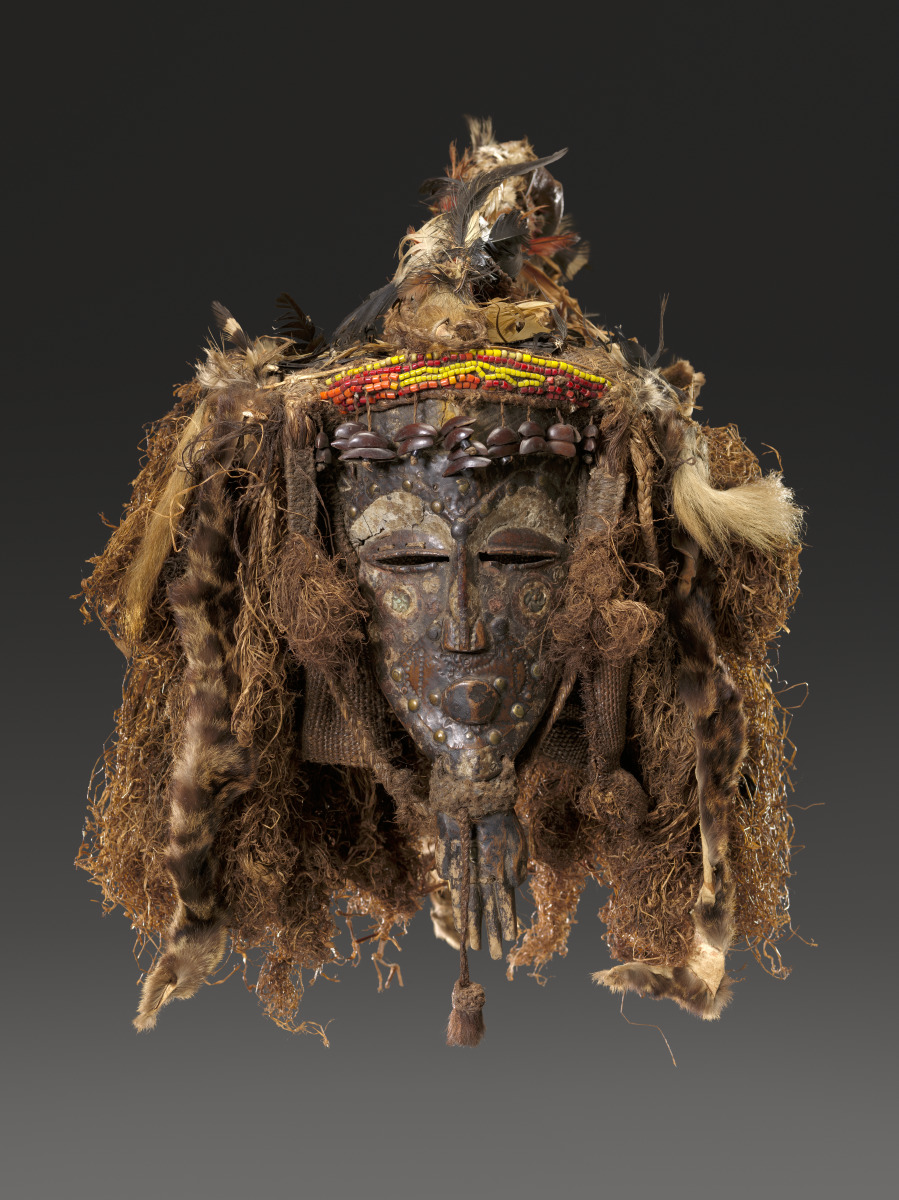
Mask (Primary Title)
Unknown (Artist)
Dinga art is known primarily through a handful of masks that were probably owned by members of a men’s society. Charms and talismans attached to the raffia head-covering demonstrate belief in the supernatural and suggest that its owner might have been a hunter or someone well versed in the awesome powers of the wilderness. The delicate facial features are nearly obscured by polychrome markings, tacks, metal strips, and clay applications that are part of a symbolic language.
The well-worn wood, the buildup of embellishments on the face, and the successive layers of the head-covering suggest that this mask was used for years and that it acquired greater meaning and status with age.
Some object records are not complete and do not reflect VMFA's full and current knowledge. VMFA makes routine updates as records are reviewed and enhanced.

